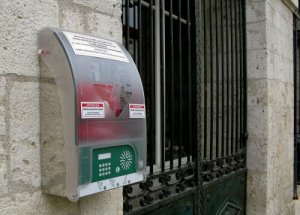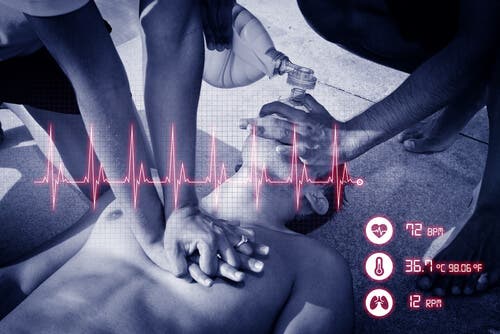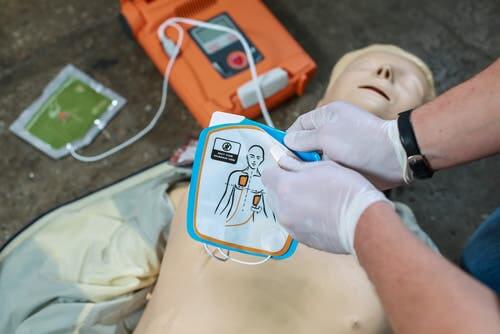Cardiopulmonary Arrest: Everything You Need to Know


Written and verified by the doctor Leonardo Biolatto
Cardiopulmonary arrest, also known as cardiac arrest, is a situation in which a person’s breathing and blood circulation stop suddenly. It’s a critical moment that puts the victim’s life at risk.
Oxygen, as you know, is the essential molecule for life. Your cells use it as “fuel” to get energy and be able to do their functions. When cardiopulmonary arrest happens, oxygen can’t get to the rest of the body.
For this reason, if the situation continues, the tissues will start to become damaged. However, a cardiopulmonary arrest is a potentially reversible situation. That is, if you act quickly, you can save the life of the person who suffers from it.
We’ll explain more in this article.
What is cardiopulmonary arrest?
Cardiopulmonary arrest consists of a sudden interruption of cardiac activity and breathing. Although it can have different causes, the most common reason is an electrical disturbance in the heart.
It’s an emergency, and potentially reversible, like we said before. If it isn’t treated immediately, cardiopulmonary arrest leads to the death of the person suffering from it. However, if you act quickly, it doesn’t have to end that way.

This is a problem, however, since 80% of cardiac arrests happen outside of hospitals or health centers. In fact, in Spain, for example, only 6 out of every 100 people know what to do when faced with that situation, despite the country’s renowned healthcare system.
For this reason, we’ll explain what to do below.
You might like to read: First Aid: How to Respond During a Cardiac Emergency
What to do for cardiopulmonary arrest?
When faced with cardiac arrest, you need to provide basic life support. This consists of substituting the respiratory and circulatory functions of the person. That means maintaining the flow of oxygen and blood circulation until emergency services arrive.
A person who has suffered from cardiac arrest will be unconscious, with no pulse, and without breathing. First, you should contact emergency health services as soon as possible.
Then, you should try to make sure they’re in a safe place and touch them to see if they recover consciousness.
Before starting resuscitation, it’s ideal to have at least two people helping. One should be in charge of resuscitation and the other of talking to health professionals on the phone to follow their instructions.
To be able to completely resuscitate the person you need a defibrillator. In many public places there are semi-automatic defibrillators. The best option is to try to find one of those and use it while you’re waiting for the ambulance.

You might bet interested in: 6 Tips to Prevent a Heart Attack
Cardiopulmonary resuscitation (CPR)
No matter what, while you’re waiting for emergency health services to arrive, you should start resuscitation. First, you should place the person face-up on a hard surface and push their head lightly back. With one hand, hold the forehead and with the other the chin, to keep the airways open.
Once you’ve done this, you should do chest compressions on the person. Situate yourself above them and, with your arms straight out, put your hands on the center of their chest. You should do 30 strong, rhythmic compressions.
After that, help provide them with oxygen by blowing forcefully into their mouth. The protocol says to do two breaths and then continue with compressions. It’s a simple technique, but it requires strength and rhythm. For this reason, ideally someone will relieve the resuscitator and continue while the first person rests.
What you should remember is that, by doing the resuscitation correctly, you can save the person’s life. There are many classes and ways to learn this type of first aid. Consider taking one!
All cited sources were thoroughly reviewed by our team to ensure their quality, reliability, currency, and validity. The bibliography of this article was considered reliable and of academic or scientific accuracy.
- Cómo actuar ante una parada cardíaca | Asociación Española de Enfermería en Cardiología (AEEC). (n.d.). Retrieved April 14, 2020, from https://www.enfermeriaencardiologia.com/como-actuar-ante-una-parada-cardiaca/
- parada cardiaca – Sociedad Española de Cardiología. (n.d.). Retrieved April 14, 2020, from https://secardiologia.es/etiquetas/parada-cardiaca
- Parada Cardiorrespiratoria (PCR) – Fundación io. (n.d.). Retrieved April 14, 2020, from https://fundacionio.com/soluciones-io/viajarseguro/consejos-viajeros/primeros-auxilios/parada-cardiorrespiratoria-pcr/
- ¿Qué es una parada cardiorespiratoria? | Aula de Pacientes. (n.d.). Retrieved April 14, 2020, from https://www.saludcastillayleon.es/AulaPacientes/es/guia-primeros-auxilios/parada-cardiorespiratoria-adulto/parada-cardiorespiratoria
This text is provided for informational purposes only and does not replace consultation with a professional. If in doubt, consult your specialist.








